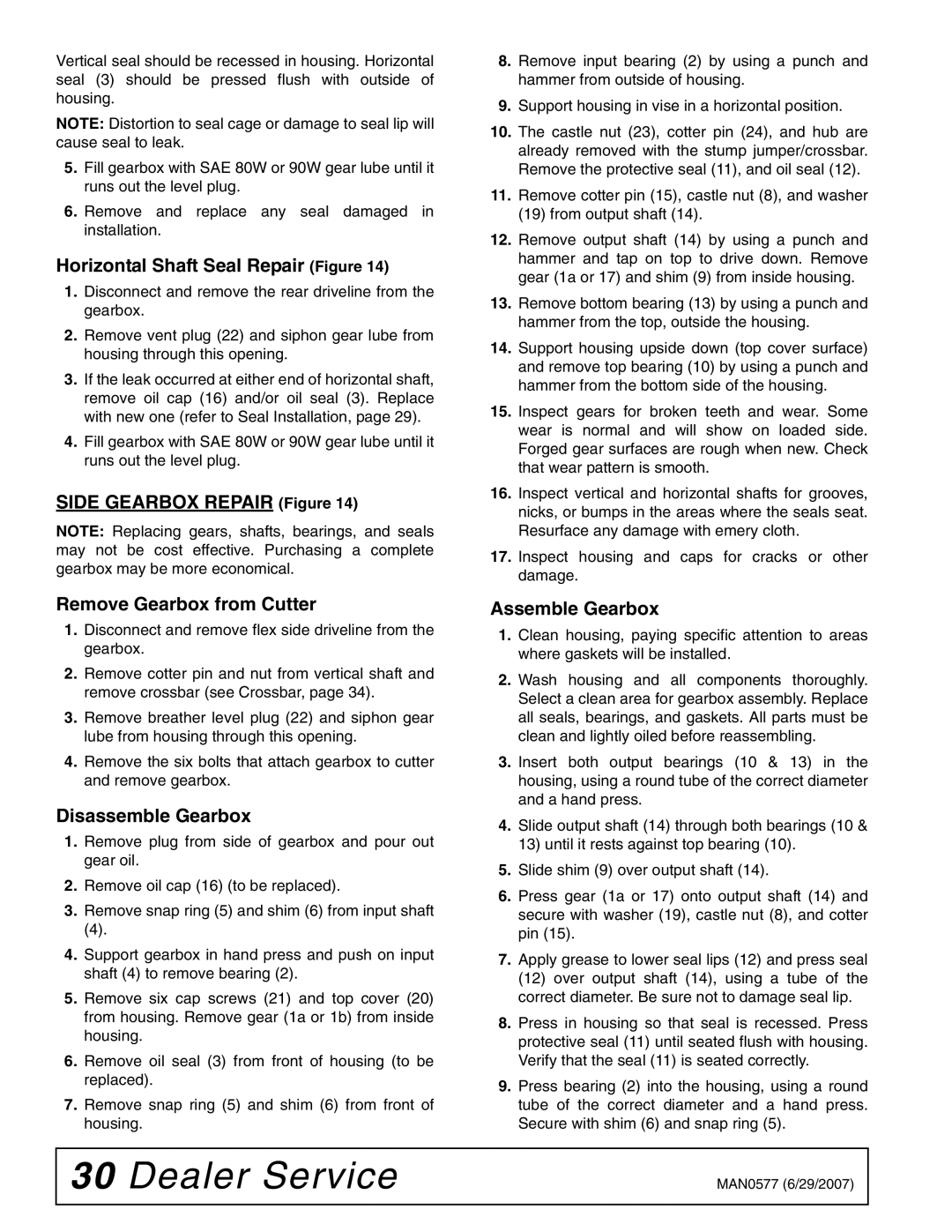TS1680, TS1680Q specifications
Woods Equipment has long been a prominent name in the agricultural and landscaping sectors, and its TS1680Q and TS1680 models further cement this reputation. Designed for versatility and reliability, both models shine in various applications, ranging from mowing to maintaining landscapes.One of the standout features of the Woods TS1680Q and TS1680 is their robust build quality. Crafted with heavy-duty materials, these models are engineered to withstand the rigors of tough terrain and demanding workloads. The TS1680Q, being the quieter variant, employs advanced sound-dampening technologies, ensuring that operators can work without the disruptive noise typical of many competitors.
With a cutting width of 68 inches, both models are designed for efficiency. The wide cutting deck not only allows operators to cover more ground quickly but also ensures a clean and even cut on various grass types. The TS1680Q further enhances mowing precision with its unique floating deck design. This feature enables the cutting deck to follow ground contours, reducing scalping on uneven surfaces.
Another notable characteristic is the versatility of attachment options. Both models come equipped with a category 1 three-point hitch which allows for easy attachment of numerous implements. This adaptability means operators can use the TS1680Q and TS1680 for other tasks, such as tilling or hauling, making it a multi-functional powerhouse for any farm or landscape project.
The hydraulic system on these models is engineered for high performance. With user-friendly controls and responsive feedback, operators can adjust settings with ease. Combined with a powerful engine, the TS1680Q and TS1680 offer reliable performance and energy efficiency, contributing to reduced fuel expenditure in the long run.
Safety features are also a priority, with shields and guards designed to protect operators during use. The controls are ergonomically situated to minimize potential hazards. Additionally, the low center of gravity design ensures stable operation, reducing the risk of tipping especially while working on inclines.
In conclusion, the Woods Equipment TS1680Q and TS1680 models are designed with the modern user in mind. Their blend of durability, innovative technology, and operational versatility makes them a top choice for both agricultural use and landscaping projects. Whether you're a farmer looking for reliable mowing solutions or a landscaper in need of a versatile implement, these models deliver exceptional performance and value.
